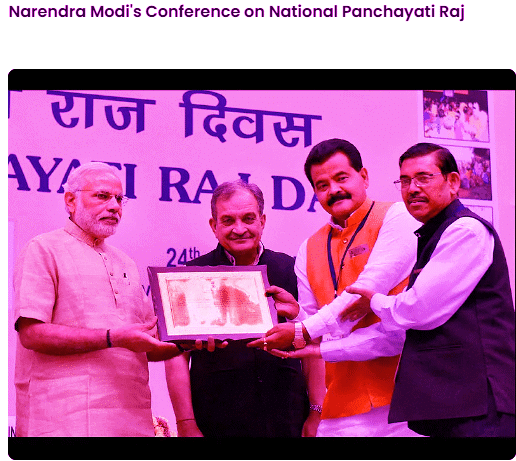PIB Summary- 8th March, 2025 | PIB (Press Information Bureau) Summary - UPSC PDF Download
A Holistic Approach for Cleanliness of River Ganga
Context
The Namami Gange Programme is a flagship initiative launched in 2014-15 to rejuvenate the Ganga River and its tributaries through pollution control and ecological conservation.
Introduction
- The Namami Gange Programme was launched in 2014-15 as an integrated conservation mission for the rejuvenation of River Ganga and its tributaries.
- The programme initially had a budget of ₹20,000 crore for five years (till March 2021) and was later extended to March 2026 with an increased budget of ₹22,500 crore.
- For 2025-26, the National Ganga Plan has an outlay of ₹3,400 crore to improve sewage treatment, water quality, and industrial waste management.
Ganga: India’s Lifeline
- The Ganga River is a cultural and economic lifeline but faces severe pollution and excessive water usage.
- The Ganga River Basin covers 27% of India’s landmass and supports 47% of its population across 11 states.
- Despite receiving 35.5% of India’s total precipitation, it is the second most water-stressed basin after the Sabarmati Basin.
Vision for Ganga Rejuvenation
- The mission focuses on:
- “Aviral Dhara” – Ensuring continuous flow.
- “Nirmal Dhara” – Achieving pollution-free water.
- Maintaining the geological and ecological balance.
- A Ganga River Basin Management Plan (GRBMP) was developed by a consortium of seven IITs, promoting an Integrated River Basin Management (IRBM) approach.
Key Interventions
- Pollution Control (Nirmal Ganga) – Reducing sources of pollution.
- Improving Flow (Aviral Ganga) – Enhancing ecological health and continuous water flow.
- Community Engagement (Jan Ganga) – Strengthening public involvement.
- Research & Policy Support (Gyan Ganga) – Encouraging scientific studies and evidence-based policy-making.
Conservation and Biodiversity Efforts
- Seven biodiversity parks in seven districts of Uttar Pradesh and five priority wetlands in Uttar Pradesh, Bihar, and Jharkhand have been sanctioned.
- Forestry projects covering 33,024 hectares implemented with an expenditure of ₹398 crore.
- 143.8 lakh Indian Major Carp (IMC) fingerlings released into the Ganga to improve fish biodiversity and dolphin conservation.
Sewerage & Industrial Pollution Control
- 203 sewerage infrastructure projects worth ₹32,613 crore taken up, with 6,255 MLD treatment capacity.
- 127 STPs completed, adding 3,446 MLD capacity.
- Three Common Effluent Treatment Plants (CETPs) sanctioned for Jajmau (20 MLD), Banther (4.5 MLD), and Mathura (6.25 MLD), with two completed.
Conclusion
- The National Mission for Clean Ganga (NMCG) continues to make significant progress in restoring the river’s ecological balance.
- The use of global expertise, sustainable projects, and community engagement is helping to achieve the goal of a clean and thriving Ganga for future generations.
“Sarpanch Pati” Culture Under Spotlight in New Digital Campaign

Context
The Ministry of Panchayati Raj has launched a campaign to eliminate proxy representation and empower women in local governance. It partnered with TVF to create digital content highlighting these issues.
What is ‘Sarpanch Pati’ Culture?
- ‘Sarpanch Pati’ refers to the unofficial representation of elected women leaders by their male relatives (husbands, fathers, or brothers) in Panchayati Raj Institutions (PRIs).
- It undermines the constitutional mandate of women’s reservation in PRIs, making them nominal leaders while men wield actual power.
- This practice dilutes women’s political empowerment, preventing them from actively participating in governance and decision-making.
Implications of ‘Sarpanch Pati’ Culture
- Weakens Democratic Representation: Elected women remain passive while male relatives take charge, reducing meaningful participation.
- Hinders Women’s Leadership Growth: Women remain dependent on male family members, preventing leadership skill development.
- Undermines Policy Implementation: Policies addressing women’s issues, healthcare, education, and social welfare are often neglected.
- Reduces Accountability: Since men act as proxies, genuine responsibility and accountability are compromised in governance.
How to Empower Women in Panchayati Raj?
- Capacity Building: Conduct leadership training programs for women representatives to boost confidence and governance skills.
- Legal and Institutional Safeguards: Implement stricter laws to penalize proxy governance and ensure women actively exercise their powers.
- Digital & Technological Interventions: Use technology to promote transparency, ensuring direct participation of women in decision-making.
- Financial Independence: Strengthen financial training and budgetary control for women representatives to promote self-reliance in governance.
- Public Awareness Campaigns: Educate communities to challenge gender biases and promote genuine women-led governance.
FAQs on PIB Summary- 8th March, 2025 - PIB (Press Information Bureau) Summary - UPSC
| 1. What is the significance of the "Sarpanch Pati" culture in the cleanliness campaign for the River Ganga? |  |
| 2. How does a holistic approach contribute to the cleanliness of the River Ganga? |  |
| 3. What are some key digital strategies used in the cleanliness campaign for the River Ganga? |  |
| 4. Why is community involvement essential in maintaining the cleanliness of the River Ganga? |  |
| 5. What challenges does the cleanliness campaign for the River Ganga face, and how can they be addressed? |  |
















